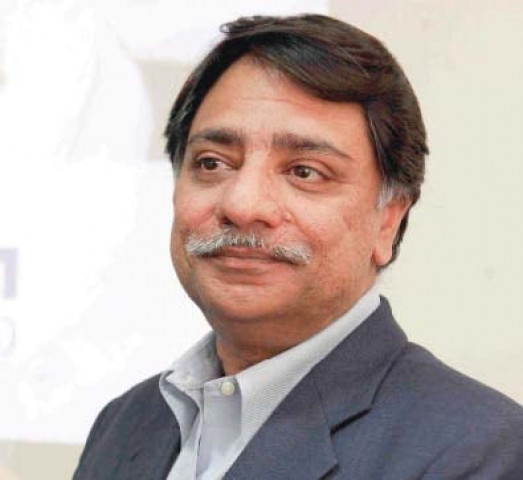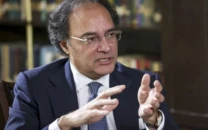Nokia faces challenge from new smartphones
‘Market size has increased, but average price has dropped’.

Nokia faces challenge from new smartphones
Imran Khalid Mahmood has been Nokia Pakistan and Afghanistan Country General Manager for almost three and a half years now, and although he says that Android and other competitors have not been able to make a dent on Nokia Pakistan’s sales, he admits that the Android operating system has become a global leader.
“The smartphone market is evolving really fast and our strategy is to go behind Microsoft’s Windows Phone 7,” he said in an interview while talking about Nokia’s deal with the software giant to use its mobile phone operating system on its hardware – shifting from the old smartphone platform, Symbian. These Nokia Windows Phone 7s, he said, would start entering the market near the first quarter of 2012.
When asked how Nokia smartphones had been faring against new competitors, Mahmood said, “In the last two years, the growth in the value business has come in predominantly from the smartphone segment and we are today, in a challenging space.”
Mahmood, however, explained that Symbian was successful as it still had a 34 per cent global market share in the smartphone arena.
He explained that to keep pace with market growth, Nokia needed an ecosystem, which comprised available applications and developers actively developing them. “…we have gone out and acquired an ecosystem which is already very strong and we felt we were not going to keep pace with,” he said. “On the other hand, we are a challenger brand…Android has become the key and leading platform and ecosystem.”
The business of selling mobile phones
Mahmood explained that two major scenarios had developed in the industry over the last few years – one was that the market size had increased by a significant amount and the second was that the average selling price (ASP) had declined.
Talking about how the economy had affected the mobile phone business, he said, “I think what has happened to the industry is that overall the market size has increased tremendously, so any downturn in the economy has been offset by the numbers that have been added to the subscriptions.”
He added that three years was the longest time, anybody was willing to keep a mobile phone, and that customers who bought a phone in 2005, had returned to the industry to purchase a new handset.
According to Mahmood, during the post-flood period, the economy had grown, and as a result there had been a rapid growth and Nokia’s telecom partners were increasing their coverage. The industry had risen by 13 per cent and Nokia had kept pace with the industry, he said.
Talking about decreasing prices of mobile devices, Mahmood said, “Volumes have increased but the average selling price has declined,” adding 80 per cent of consumers buy handsets worth not more than Rs8,000.
Published in The Express Tribune, May 13th, 2011.



















COMMENTS
Comments are moderated and generally will be posted if they are on-topic and not abusive.
For more information, please see our Comments FAQ